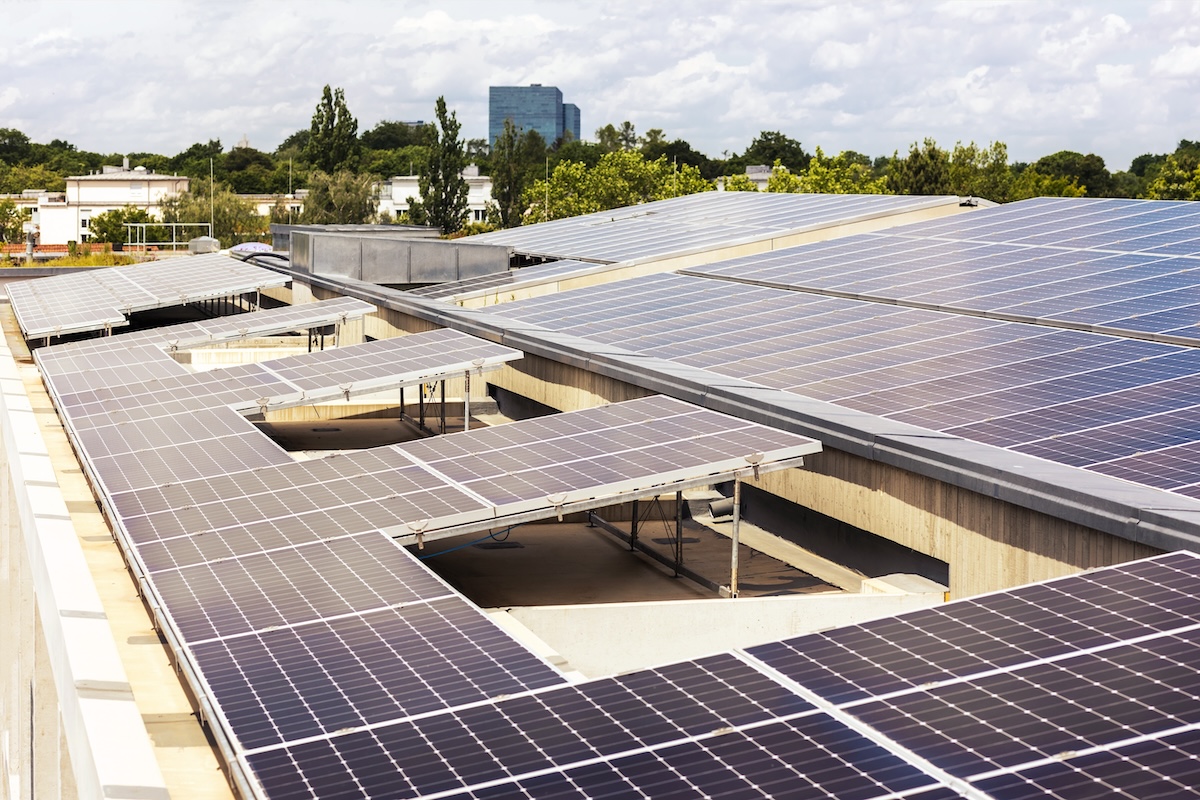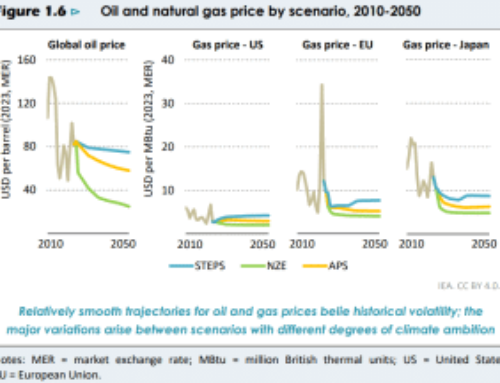The Brief: Building demand for $27 billion in clean energy capital
October 22, 2024

Greetings Agents of Impact!
In today’s Brief:
- Balancing supply and demand for the Greenhouse Gas Reduction Fund
- Sustainable aquaculture
- Agri-lending in Brazil
- Renewable energy tipping points in the Global South
Featured: Deploy!
Wanted: Big supply of green projects to stoke demand for $27 billion in clean energy funds. Money is not the issue. Two months after $27 billion started flowing to nonprofits and community lenders from a pillar of the Biden Administration’s landmark climate initiative, the challenge is developing enough projects. The make-or-break task for distributors of Greenhouse Gas Reduction funds: drumming up demand from millions of Americans, and putting the new capital for efficient heat pumps, solar panels, electrified vehicle fleets and other green solutions to work. “There’s no effective demand right now,” Michael Swack of the Center on Impact Finance at the University of New Hampshire’s Carsey School of Public Policy tells ImpactAlpha. Many communities are not yet aware that the incentives exist. Fewer than 1% of US households make an energy improvement in any given year. “There’s a lot of anxiety over the fact that this ecosystem around clean energy is unbalanced. You often have capital available, but you don’t have consumers and small businesses ready to take up that capital and employ people,” says Arturo Garcia-Costas of the New York Community Trust.
- Market building. Creating consumer demand for the historic infrastructure funding centers on three interlinked tasks. Persuading people and businesses that they actually want clean energy upgrades. Training lenders and borrowers, particularly in underserved communities. And mobilizing private capital to amplify the federal funding’s impact. GGRF awardees are a conduit that funnels dollars to “green banks,” credit unions, community development finance institutions and other local lenders. That network will work with solar installers, affordable housing builders and other project developers. Marketing and underwriting new green loan products that work for consumers and communities requires organizations, lenders and technical assistance providers to collaborate on a scale that they simply haven’t before, Swack says. “The vast majority of community development lenders in this country have never made clean energy loans.”
- Getting to go. Too few projects are shovel-ready; the process of building trust with communities for clean energy upgrades, landing their buy-in and securing permits can take years. Most projects won’t break ground until at least early next year, says Madeline Fraser Cook of the Local Initiatives Support Corp., a CDFI that’s part of the Power Forward Communities coalition. The EPA gave recipients of the $14 billion National Clean Investment Fund for green affordable housing, energy retrofits, community solar and EV charging infrastructure seven years to lend their awarded dollars. “Right now, it’s a lot of the table setting for how it’s all going to come together,” says Amy Freitag of New York Community Trust.
- Solutions. GGRF recipients are racing to line up philanthropic “pre-development” capital to help lenders get projects ready. Only 10% of GGRF funds can be used to cover costs for operations, training and technical assistance. One mounting concern: how to make good on Biden’s Justice 40 pledge for at least 40% of the federal funding’s benefits to reach marginalized communities. The worry is that too many dollars could be chasing too few projects. “We don’t want to just be picking projects that are low hanging fruit,” says Freitag. Focusing on people, not jargon, is emerging as the path to sell the biggest climate initiative in US history. GGRF stakeholders need to “get laser-focused on two words: customer service,” argue Carsey’s Eric Hangen and Jessica Luk-Li of Climate Impact Advisors in a recent paper. That means “high quality, unbiased assistance through trusted community-based advisors to build awareness and understanding of clean energy and to help customers at every stage of their clean energy project.”
Dealflow: Financing Fish
Ireland’s Blue Revolution Fund raises $101 million for sustainable aquaculture. Hatch Blue, an Ireland-based investor in aquaculture and alternative seafood startups, clinched €93 million ($101 million) for its Blue Revolution Fund, the firm’s second fund. The fund, which is advised by global environmental nonprofit The Nature Conservancy, or TNC, surpassed its initial goal of €75 million ($94 million) in March. Investors include the European Investment Fund with a €20 million infusion, the Irish Strategic Investment Fund, and Germany’s Rentenbank.
- Early-stage investing. Blue Revolution Fund was launched by Hatch Blue in 2022 to fund solutions that restore ocean health and biodiversity and support coastal communities. It will use the capital to back more than a dozen early-stage aquaculture ventures working on next-generation fish farms, regenerative seaweed, bivalve farming and alternative seafood, as well as nutrition, health and genetics. It writes checks ranging from €500,000 to €5 million. The fund’s portfolio includes Norway’s CageEye, which optimizes fish feeding with fish tracking sensors; Singapore’s Peptobiotics, which develops antimicrobial peptides to improve the health of farmed shrimp; and Canada’s New School Foods, a maker of plant-based seafood alternatives.
- Sustainable aquaculture. Aquaculture helps alleviate overfishing and climate-related pressures on natural fisheries, but it has also led to the spread of disease and habitat destruction. “BRF aims to accelerate the development and adoption of technologies and farming practices that have the potential to move aquaculture closer to realizing its nature-positive potential,” said TNC’s Robert Jones. The fund’s performance metrics include carbon sequestration, nitrogen removal from coastal waterways, job creation for coastal communities, habitat protection, and quantities of seafood produced.
Agrolend raises $53 million to expand financial services for Brazil’s small farmers. São Paulo-based Agrolend was founded in 2020 by brothers Alan and André Glezer to give small and mid-sized farmers in Brazil access to collateral-free loans at reasonable rates in the inflation-troubled country. The digital bank’s Series C round – among the largest agtech deals in Brazil – was led by emerging markets impact investor Creation Investments Capital Management and the venture capital arm of agrochemicals giant Syngenta. Agrolend has loaned $211 million to more than 12,000 rural farmers.
- IPO plans. The Glezer brothers’ vision is to grow Agrolend into a digital provider of comprehensive financial services for agriculture, including credit cards, checking accounts, and insurance to protect farmers’ livelihoods. The startup is aiming for an initial public offering in New York next year. “Brazil has a massive potential for growth in the ag space,” Andre said in a 2021 interview. The startup, which is regulated by Brazil’s central bank, last raised $27 million in a Series B round in 2022 led by Lightrock.
- Smallholder finance. Across the Global South, smallholder farmers struggle to obtain financing due to demands for collateral by traditional lenders that overlook the sector’s needs and seasonal nature. Farmers request a loan through Agrolend’s digital platform, which is vetted by an alternative credit scoring model, and receive loan documents via WhatsApp. Agrolend transfers approved loans to partners including Syngenta.
- Share this post.
Dealflow overflow. Investment news crossing our desks:
- Oriole Networks uses light to train AI models up to 100 times faster, saving energy. The London-based startup raised €20.2 million ($22 million) to get products to market by early 2025. (EU Startups)
- Stellapps, an India-based startup using data analytics and sensors to manage dairy farm operations, raised $26 million in equity and debt from Omnivore, IDH Farmfit Fund, the US International Development Finance Corp. and others. (Economic Times)
- RIFT, a spin-off from Eindhoven University of Technology in the Netherlands, raised €11 million ($12 million) from Rubio Impact Ventures and others to secure commercial contracts for its iron fuel technology for low-carbon industrial heat. (Eindhoven University of Technology)
- Cape Town-based Vantage Capital, an Africa-focused mezzanine fund manager, invested €66 million ($71 million) in Camusat to expand telecommunications infrastructure in Africa. (Further Africa)
Signals: Energy Transition
Rapidly falling green energy prices offer ‘the cheapest route to growth in history.’ A positive impact of China’s oversupply of solar panels and batteries: sharply lower prices for countries in the Global South that are expanding their electrical infrastructure to power their growth. Their pace of solar and wind power additions is faster than in the Global North, according to a new report from RMI, which calls the trajectory “the cheapest route to growth in history.” China has announced enough cleantech capacity to supply all of the Global South’s demand, and more than $100 billion in clean energy projects around the world since last year. “These cost falls are not yet factored into the way people are looking at this opportunity in the Global South — this is new,” RMI’s Kingsmill Bond tells ImpactAlpha. It’s often said that with climate change, the Global South is being asked to solve a problem it didn’t create. Leapfrogging past fossil fuels is a way it may do just that.
- Tipping point. “Powering up the Global South” declares that nearly two-thirds of the Global South “has passed the renewables tipping point” in adopting green energy. Solar and wind generation has spiked 23% each year over the past five years, and now supplies 9% of electricity generation – the same as in the Global North. The vastly diverse southern region holds 70% of the global potential for renewable energy and half of the minerals, including copper, lithium, nickel and cobalt, which are needed for batteries, wind turbines and other green infrastructure. “The Global South can be a renewable superpower,” write Bond and his co-author Vikram Singh. By 2030, the region is likely to quadruple its electricity generation from solar and wind, to more than 2,000 terawatts per year. Keep reading.
- ‘Productive use’ offgrid appliances. Nearly one in five energy consumers in the Global South have tapped off-grid solar to support or start a business, according to 60 Decibels. Roughly 80% of those users saw an increase in income. Investors are responding. The global off-grid solar sector saw a record $1.2 billion in investments in 2022 and 2023, driven by debt financing. Among the up-and-coming subsectors: Productive-use appliances, like solar water pumps, that help users generate immediate income. “When you can earn extra dollars, extra naira or shillings on top of [lighting and charging], it’s much more systemic in terms of development impact,” Guilhem Dupuy of Gaia Impact told ImpactAlpha at the Global Off-Grid Solar Forum in Nairobi. Go deeper.
Agents of Impact: Follow the Talent
Dustin Shay, previously with Acumen, joins Mission Driven Finance as senior director of capital initiatives… Sorenson Impact Advisory is hiring an investment associate in Salt Lake City… American Student Assistance seeks an associate director of mission impact investing… Aspen Institute is looking for a senior development manager in Washington, DC… The Justice Climate Fund is recruiting a managing director of development and capitalization, a managing director of partnerships, a director of research, impact and outcomes, and other roles… Impact Investing Ghana and Impact Investors Foundation are hosting the Africa Impact Summit next June in Accra.
👉 View (or post) impact investing jobs on ImpactAlpha’s Career Hub.
Thank you for your impact!
– Oct. 22, 2024
Search
RECENT PRESS RELEASES
Related Post




